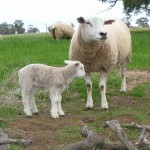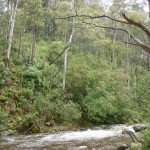Answers to questions in “What’s Biodiversity?“
This page had two sections in it to help you understand the word ‘biodiversity':
- farm and
- forest
The answers to the questions on this page are below, in their groups.
farm
1 1 creature species
2 2 plant species can be seen.
3 Not many species visible
(Return to “What’s Biodiversity?” page)
Linkages
4 sheep eat grass (food), and walk on it and sit on it (home).
5 Grass gets nutrients(food) from sheep wee and poo.
6 Trees provided shelter from the wind and rain and sun (home).
Sheep don’t have hands to reach their backs and woolly sides. Tree trunks and branches are used as a rubbing post for their backs.
Ewes like to be on their own, and ‘private’ when they are giving birth. Fallen branches make a screen for them.
7 Sheep really don’t do anything directly to help the trees.
(Return to “What’s Biodiversity?” page)
Counting
8 4 easy to see sheep, and one more further away
9 15-20 trees- it’s hard to see some of them as separate trees
10 Too many grass plants to count
11 Grass has the most number of plants but needs to as each sheep eats many blades of grass ie many plants
12 In a drought, when the grass doesn’t grow well, the sheep will go hungry unless dry food is brought from somewhere else for the sheep to eat.
(Return to “What’s Biodiversity?” page)
Forest
13 About a half dozen different plant types can be seen: ferns, white- trunked trees, brown- trunk trees, middle size shrubs, small shrubs, moss
14 It is too hard to count – there are too many even of the white-trunked trees
15 Creatures that might be here: birds, mammals, reptiles, insects, frogs, fish etc
16 There is nothing in this forest that we eat today. (An indigenous view would be different)
17 It would be very hard to get to anything to care for it.
(Return to “What’s Biodiversity?” page)
Return to Biodiversity on our farm




